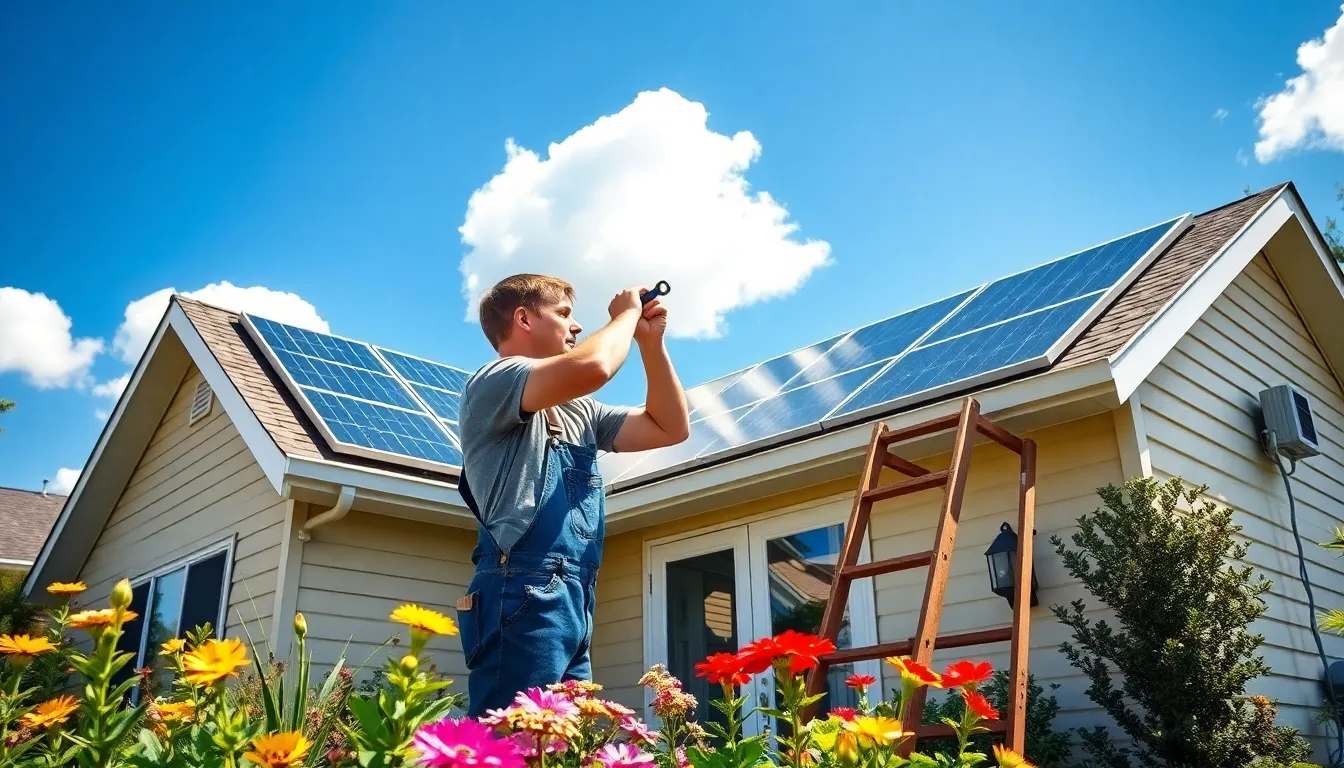In an era where sustainability and self-sufficiency are becoming increasingly important, the DIY solar movement is gaining traction. This article explores the exciting combination of DIY solar projects and how HomeRocket Realty is paving the way for eco-conscious homeowners. Whether you’re considering installing your own solar system or just curious about the benefits, understanding the basics can empower you to make informed decisions. Join us as we investigate into the world of DIY solar energy and discover how it can transform your home and life.
Table of Contents
ToggleUnderstanding the DIY Solar Movement

The DIY solar movement is a collective response to rising energy costs and environmental concerns. Homeowners and enthusiasts are increasingly opting for solar solutions that they can carry out themselves, directly benefiting from renewable energy resources. This movement is not just a trend: it’s a revolution in how individuals approach energy consumption.
As technology advances, affordable solar materials have become more accessible, empowering homeowners to take control of their energy needs. Blogs, forums, and community workshops serve as invaluable resources for DIY solar enthusiasts, creating a shared knowledge base that fosters confidence and innovation.
Benefits of DIY Solar Energy
Embracing DIY solar energy offers numerous advantages. First and foremost is cost savings. By taking on the project yourself, homeowners can significantly reduce installation fees that typically accompany professional solar panel installations.
Also, DIY solar projects promote a deeper understanding of renewable energy systems. Homeowners who engage in building and maintaining their setups often become more environmentally conscious, leading to sustainable lifestyle choices. Also, there’s a sense of achievement that comes from successfully harnessing solar energy for one’s home, enhancing personal satisfaction.
Finally, going solar helps reduce reliance on traditional energy sources, thereby contributing to a lower carbon footprint. Each solar installation translates into cleaner energy, benefiting the planet as well as the family.
Key Components of a DIY Solar System
There are several essential components that make up a DIY solar system. Understanding these can simplify the building process.
Step-by-Step Guide to Building Your Own Solar System
- Assessment: Determine your energy needs by analyzing your electricity bills and consumption patterns.
- Planning: Design your solar layout, ensuring it fits your property and budget.
- Purchase Components: Acquire needed equipment like solar panels, inverters, batteries, and mounting hardware.
- Installation: Following safety guidelines, mount the solar panels and connect them to your home’s electrical system.
- Testing: Finally, test your installation to ensure it functions correctly.
Choosing the Right Solar Panels
Selecting solar panels is crucial: they should be durable and efficient. Factors to consider include efficiency ratings, warranty, size, and cost. Leading brands often include SunPower, LG, and Canadian Solar, which offer solid performance and longevity.
Installing Solar Batteries and Inverters
Batteries store the energy generated for later use, while inverters convert the direct current (DC) produced by solar panels into alternating current (AC) used by home appliances. Using high-quality batteries can enhance energy independence and usability.
Integrating with Home Systems
Successful integration with existing home systems ensures optimal efficiency. It’s essential to connect the solar system with home energy management systems to track usage effectively. Conducting regular maintenance checks can prolong the lifespan and performance of the setup.
Cost Considerations for DIY Solar Projects
When embarking on a DIY solar project, evaluating costs is vital. Initially, homeowners may face a higher upfront investment for quality materials. But, choosing to install solar in phases can mitigate this burden.
Factors influencing the overall cost include:
- Equipment Quality: Investing in high-quality components can lead to better efficiency and longevity.
- System Size: Larger systems generally lead to higher costs but can also yield greater savings over time.
- Installation Materials: Roofing materials, mounts, and electrical components should be factored into the budget.
To aid financial planning, many states offer incentives such as tax credits, rebates, and grants for solar projects, which can offset initial costs significantly.
Navigating Local Regulations and Incentives
Before beginning a DIY solar project, it’s essential to understand local regulations and incentives that can impact installation.
Each area may have specific codes about solar panel installations, misuse of tools, or even historical district requirements. Gaining proper permits not only ensures compliance with local laws but can also protect the homeowner from potential fines.
Incentives offered can vary widely, but many states provide financial benefits for those who opt for solar energy. These benefits can come in the form of tax credits, rebates, or grants, making solar more accessible for many families. Websites like the Database of State Incentives for Renewables & Efficiency (DSIRE) can help guide homeowners in their quest for these opportunities.
Case Studies: Successful DIY Solar Projects
Concrete examples of successful DIY solar projects can serve as inspiration.
- The Johnson Family: After assessing their energy needs, the Johnsons designed their solar system and installed it over a summer. They reported a 50% reduction in their monthly electricity bills, leading to significant long-term savings.
- Eco-Friendly Community in Vermont: A group of neighbors collaborated to pool resources for a larger solar setup. This shared project showcased how community efforts could strengthen the DIY solar approach. Their project resulted in nearly complete energy independence for participating homes.
These cases demonstrate that undertaking a DIY solar project can yield tangible benefits while also fostering community ties.
Conclusion
The DIY solar movement represents an exciting opportunity for homeowners looking to take control of their energy costs and make sustainable choices. With numerous benefits ranging from financial savings to increased environmental awareness, it’s a growing trend that reflects a broader shift toward renewable energy solutions.
As more individuals embark on this journey, resources and community support continue to thrive, making solar energy accessible to a wider audience. For those considering taking the plunge, the HomeRocket Realty DIY Solar Pangolin project serves as a testament that self-sufficiency and sustainability can go hand in hand.






